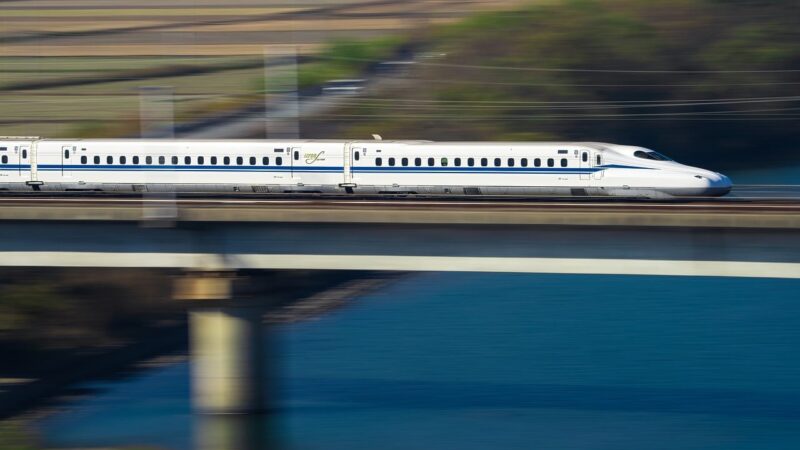How High-Speed Rail Networks Are Transforming Travel Across Continents
November 11, 2024

High-speed rail (HSR) has emerged as one of the most transformative modes of transportation in modern times, reshaping how we perceive distance, time, and mobility. With trains capable of reaching speeds exceeding 300 kilometers per hour (approximately 186 miles per hour), HSR networks are redefining travel across continents, promoting regional connectivity, reducing carbon footprints, and enhancing economic development. In this article, we will explore how high-speed rail is revolutionizing travel, its economic implications, environmental benefits, and the challenges it faces as it continues to expand globally.
1. The Evolution of High-Speed Rail
The concept of high-speed rail can be traced back to Japan’s Shinkansen, which first began operations in 1964, coinciding with the Tokyo Olympics. Since then, nations across the globe have adopted and adapted the high-speed rail model to fit their unique geographical and demographic needs.
Countries like France, Spain, China, and Germany have implemented state-of-the-art HSR systems, allowing passengers to travel between major urban centers at unprecedented speeds. The benefits of these systems have sparked interest and investment from other countries, aiming to modernize their transportation infrastructure.
High-speed rail isn’t just about speed; it also emphasizes safety, efficiency, and passenger comfort. Modern HSR trains are equipped with a range of amenities, from spacious seating and Wi-Fi to dining options and power outlets, all designed to enhance the passenger experience.
2. Economic Impact of High-Speed Rail
The economic benefits of high-speed rail are substantial. By drastically reducing travel times between urban centers, HSR enhances productivity by enabling workers to commute longer distances without significant time losses. For instance, a journey that used to take hours by car or conventional train can now be completed in a fraction of the time.
Moreover, regions connected by HSR see increased tourism and business opportunities. High-speed rail hubs often become vibrant centers of commerce, attracting retail, dining, and entertainment services. This revitalization of regional economies is evident in cities like Lyon in France, which transformed into a commercial hotspot following the establishment of the TGV lines.
Additionally, governments tend to see a significant return on investment. According to various studies, every dollar invested in high-speed rail can yield approximately four to six dollars in economic benefits.
3. Environmental Benefits of High-Speed Rail
High-speed rail is not only a boon for the economy but also for the environment. As concerns about climate change intensify, the need for sustainable travel options becomes increasingly crucial. Trains produce significantly lower greenhouse gas emissions per passenger kilometer compared to cars and airplanes.
In fact, studies have shown that high-speed rail travel can reduce carbon emissions by up to 70% when compared to flying. Trains are also more energy-efficient, relying on electricity, which can be sourced from renewable energy, reinforcing their environmental credentials.
Furthermore, by providing a viable alternative to air travel, HSR networks help alleviate congestion at airports and on highways, contributing to reduced noise pollution and better air quality in urban areas.
4. Global Expansion of High-Speed Rail Networks
The high-speed rail phenomenon is not limited to just a few countries; it is spreading rapidly across the globe. China leads the world with the most extensive high-speed rail network, boasting over 40,000 kilometers (approximately 25,000 miles) of track.
Other countries are also investing heavily in HSR systems. For example, India is planning the Mumbai-Ahmedabad Bullet Train project, which aims to introduce high-speed rail travel to the subcontinent. The United States is also showing interest, with proposed lines in California and potential extensions across the Northeast corridor.
Each country’s high-speed rail system brings unique features, tailored to fit regional needs and local cultures. HSR is also seen as a catalyst for diminishing the reliance on fossil fuels, opening doors for innovation in the green transport sector.
5. Challenges Facing High-Speed Rail Implementation
Despite its advantages, high-speed rail faces several challenges that could impede its expansion. These include:
- High Initial Cost: Building HSR networks requires substantial upfront investment for infrastructure, trains, and technology, which can deter governments from pursuing these projects.
- Land Acquisition Issues: Securing the land necessary for new rail lines can be a cumbersome and contentious process, often resulting in lengthy legal battles and opposition from affected communities.
- Competition from Other Transport Modes: In many regions, HSR competes with established transport systems such as airplanes and cars, which may have widespread public support already entrenched in society.
- Technological Advancements: As technology evolves, it may necessitate additional investments and upgrades to ensure existing HSR systems remain competitive and safe for passengers.
As nations continue to weigh the pros and cons of investing in high-speed rail, it becomes crucial to address these challenges through innovation, collaboration, and public engagement.
Conclusion
High-speed rail networks are undeniably transforming travel across continents, presenting a sustainable, efficient, and economic alternative to traditional transport methods. As more countries recognize the benefits of HSR, they come closer to addressing pressing environmental concerns and enhancing their economies by improving mobility. While challenges remain, the future of high-speed rail is promising, heralding a new era of interconnectedness and travel that could unite regions and foster sustainable growth.
As we look ahead, it is clear that high-speed rail will play a pivotal role in shaping the transportation landscapes of the future, connecting people and places like never before. With ongoing developments and plans for expansion, we can expect HSR to redefine how we travel and interact with the world around us.







